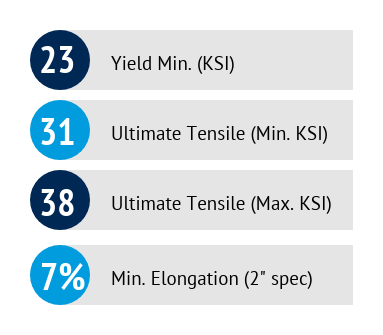
Aluminum can be considered one of the more versatile of steels—most used for its light weight, resistance to corrosion, a high ratio of strength-to-weight. But when you need a bit more out of the alloy, you can alter its properties. One of more common methods used to alter the alloy is tempering.
Steel tempering is a condition produced in sheet steel by mechanical, chemical, or thermal treatment. A given steel may be in fully softened or annealed temper, or it may be cold worked to the hard temper, or further to spring temper.
What is aluminum temper?
When it comes to aluminum, there are five designations for temper:
Subdivisions of Tempers
Certain tempers have subdivisions, which further define the basic operations. For instance, let’s take a common aluminum temper: 5052-H32. This would be defined as such:
Let’s break that down. That first digit—3—indicates the basic operation. In the case of 5052-H32, this is strain hardened and stabilized.
The second digit—2—indicates the degree of strain hardening. In the case of 5052-H32, this is quarter hard.
Furthermore, you could have an instance where a third digit is included, which indicates the variation of a two-digit temper. Embossing changes properties.
- H12 becomes H134
- H14 becomes H154
- H16 becomes H174
- H18 becomes H194
What are the mechanical properties of Aluminum 5052-H32?
Now that the properties of the alloy have been altered via tempering, the mechanical properties of 5052-H3 look like this:
Yield: The stress at which a material bends and will not return to the original shape.
Ultimate: (Also called tensile): The maximum load per unit of original cross-section area obtained before breaking of a tensile test specimen. In other words, this is the most stress before breaking.
Elongation: The increase in length of a test specimen after rupture in a tensile test, expressed as a percentage of the original length.


.ashx?h=288&w=550&hash=0BB7E415ACC98A50AE1D78CCD0FE38F1)






